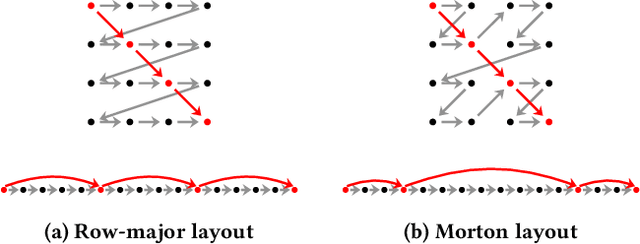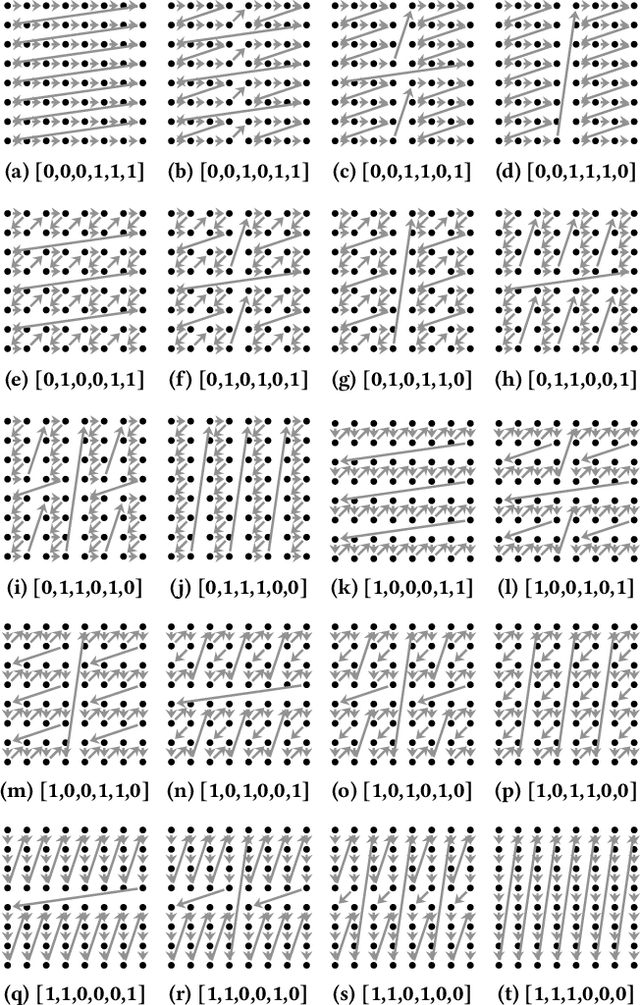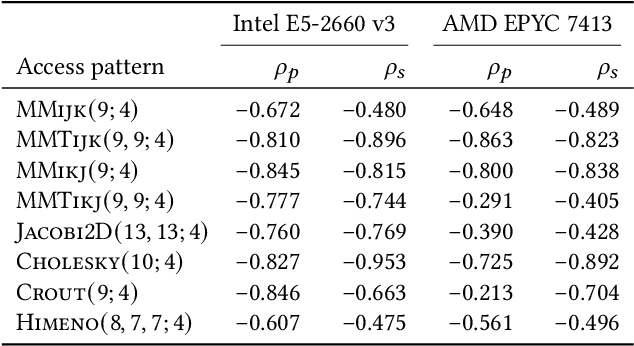Ana-Lucia Varbanescu
InTreeger: An End-to-End Framework for Integer-Only Decision Tree Inference
May 21, 2025Abstract:Integer quantization has emerged as a critical technique to facilitate deployment on resource-constrained devices. Although they do reduce the complexity of the learning models, their inference performance is often prone to quantization-induced errors. To this end, we introduce InTreeger: an end-to-end framework that takes a training dataset as input, and outputs an architecture-agnostic integer-only C implementation of tree-based machine learning model, without loss of precision. This framework enables anyone, even those without prior experience in machine learning, to generate a highly optimized integer-only classification model that can run on any hardware simply by providing an input dataset and target variable. We evaluated our generated implementations across three different architectures (ARM, x86, and RISC-V), resulting in significant improvements in inference latency. In addition, we show the energy efficiency compared to typical decision tree implementations that rely on floating-point arithmetic. The results underscore the advantages of integer-only inference, making it particularly suitable for energy- and area-constrained devices such as embedded systems and edge computing platforms, while also enabling the execution of decision trees on existing ultra-low power devices.
Novel Approaches for ML-Assisted Particle Track Reconstruction and Hit Clustering
May 27, 2024



Abstract:Track reconstruction is a vital aspect of High-Energy Physics (HEP) and plays a critical role in major experiments. In this study, we delve into unexplored avenues for particle track reconstruction and hit clustering. Firstly, we enhance the algorithmic design effort by utilising a simplified simulator (REDVID) to generate training data that is specifically composed for simplicity. We demonstrate the effectiveness of this data in guiding the development of optimal network architectures. Additionally, we investigate the application of image segmentation networks for this task, exploring their potential for accurate track reconstruction. Moreover, we approach the task from a different perspective by treating it as a hit sequence to track sequence translation problem. Specifically, we explore the utilisation of Transformer architectures for tracking purposes. Our preliminary findings are covered in detail. By considering this novel approach, we aim to uncover new insights and potential advancements in track reconstruction. This research sheds light on previously unexplored methods and provides valuable insights for the field of particle track reconstruction and hit clustering in HEP.
Model Parallelism on Distributed Infrastructure: A Literature Review from Theory to LLM Case-Studies
Mar 06, 2024



Abstract:Neural networks have become a cornerstone of machine learning. As the trend for these to get more and more complex continues, so does the underlying hardware and software infrastructure for training and deployment. In this survey we answer three research questions: "What types of model parallelism exist?", "What are the challenges of model parallelism?", and "What is a modern use-case of model parallelism?" We answer the first question by looking at how neural networks can be parallelised and expressing these as operator graphs while exploring the available dimensions. The dimensions along which neural networks can be parallelised are intra-operator and inter-operator. We answer the second question by collecting and listing both implementation challenges for the types of parallelism, as well as the problem of optimally partitioning the operator graph. We answer the last question by collecting and listing how parallelism is applied in modern multi-billion parameter transformer networks, to the extend that this is possible with the limited information shared about these networks.
Finding Morton-Like Layouts for Multi-Dimensional Arrays Using Evolutionary Algorithms
Sep 13, 2023



Abstract:The layout of multi-dimensional data can have a significant impact on the efficacy of hardware caches and, by extension, the performance of applications. Common multi-dimensional layouts include the canonical row-major and column-major layouts as well as the Morton curve layout. In this paper, we describe how the Morton layout can be generalized to a very large family of multi-dimensional data layouts with widely varying performance characteristics. We posit that this design space can be efficiently explored using a combinatorial evolutionary methodology based on genetic algorithms. To this end, we propose a chromosomal representation for such layouts as well as a methodology for estimating the fitness of array layouts using cache simulation. We show that our fitness function correlates to kernel running time in real hardware, and that our evolutionary strategy allows us to find candidates with favorable simulated cache properties in four out of the eight real-world applications under consideration in a small number of generations. Finally, we demonstrate that the array layouts found using our evolutionary method perform well not only in simulated environments but that they can effect significant performance gains -- up to a factor ten in extreme cases -- in real hardware.
Reduced Simulations for High-Energy Physics, a Middle Ground for Data-Driven Physics Research
Aug 30, 2023Abstract:Subatomic particle track reconstruction (tracking) is a vital task in High-Energy Physics experiments. Tracking is exceptionally computationally challenging and fielded solutions, relying on traditional algorithms, do not scale linearly. Machine Learning (ML) assisted solutions are a promising answer. We argue that a complexity-reduced problem description and the data representing it, will facilitate the solution exploration workflow. We provide the REDuced VIrtual Detector (REDVID) as a complexity-reduced detector model and particle collision event simulator combo. REDVID is intended as a simulation-in-the-loop, to both generate synthetic data efficiently and to simplify the challenge of ML model design. The fully parametric nature of our tool, with regards to system-level configuration, while in contrast to physics-accurate simulations, allows for the generation of simplified data for research and education, at different levels. Resulting from the reduced complexity, we showcase the computational efficiency of REDVID by providing the computational cost figures for a multitude of simulation benchmarks. As a simulation and a generative tool for ML-assisted solution design, REDVID is highly flexible, reusable and open-source. Reference data sets generated with REDVID are publicly available.
 Add to Chrome
Add to Chrome Add to Firefox
Add to Firefox Add to Edge
Add to Edge